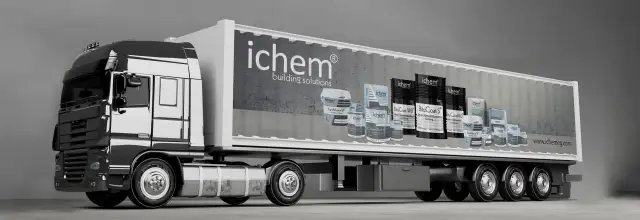
Water Stop (ووتر ستوب) | Best PVC & UPVC Types from iChem Egypt 2026
What is Water Stop?
Water Stop is a flexible strip made of materials such as PVC, UPVC, Rubber, or Hydrophilic compounds, installed inside concrete joints during casting to prevent water leakage through construction or expansion joints.
It is one of the most effective waterproofing solutions for concrete structures exposed to water pressure, such as water tanks, tunnels, lift stations, and wastewater treatment plants.
Importance of Water Stop in Concrete Structure Protection
Installing a Water Stop is not an optional step — it is essential for preserving the structural integrity of concrete buildings:
Prevents water from penetrating through concrete joints.
Protects steel reinforcement from corrosion and rust.
Extends the lifespan of tanks, tunnels, and sewage stations.
Reduces future repair and maintenance costs.
Complies with Egyptian and international waterproofing standards.
✅ Structures where Water Stop must be installed:
Underground and overhead water tanks
Sewage treatment and pump stations
Tunnels and box culverts
Swimming pools and desalination plants
Horizontal and vertical concrete joints
Types of Water Stop in Egypt (2026)
1. PVC Water Stop (Most Common Type)
Flexible, easy to weld, cost-effective
Resistant to chemicals, water, and high pressure
Ideal for tanks, tunnels, and water stations
2. UPVC Water Stop
Stronger and more rigid than PVC
Higher resistance to heat and cracking
Used in joints exposed to movement or vibration
3. Rubber Water Stop
High elasticity and flexibility
Withstands extreme water pressure
Suitable for dams, deep tunnels, and power plants
4. Hydrophilic Water Stop
Expands when in contact with water to seal joints
Ideal for tight areas or post-casting joints
5. Metal Water Stop
Made from stainless steel or galvanized steel
Used in heavy industrial structures and power stations
6. Adhesive Water Stop
Easy and fast installation
Suitable for small repairs and maintenance works
IsoFlex PVC Water Stop by iChem Egypt – Latest 2026 Edition
iChem Egypt provides one of the strongest PVC Water Stop products in 2026 under the name IsoFlex PVC Water Stop, approved in major national projects.
✅ Key Advantages vs. Sika & STC:
European high-quality raw materials
Excellent flexibility and high water pressure resistance
Resistant to chemicals, salt, heat, and oils
Ideal for mega projects and large water tanks
Competitive price with iChem warranty
Available Profiles (Sections)
Profile | Application |
|---|---|
V | Vertical concrete joints |
O | Horizontal joints |
DR | High-pressure joints |
ER | Expansion and contraction joints |
IsoFlex PVC Water Stop Sizes – 2026
Size | Width (cm) | Thickness (mm) | Length (m) | Application |
|---|---|---|---|---|
Small | 20 | 10 | 10 | Medium tanks – vertical joints |
Medium | 25 | 15 | 15 | Treatment plants – tunnels |
Large | 30 | 20 | 30 | Dams – high water pressure |
How to Install Water Stop Properly (According to 2026 Code)
1. Before Concrete Pouring
Fix the Water Stop at the center of the concrete joint
Use metal clamps or heat welding for proper connection
2. During Pouring
Ensure the fins of the Water Stop are fully embedded in concrete
Pour concrete without voids or honeycombing around the strip
3. After Completion
Inspect welded joints to ensure no openings
Perform water leakage test if needed
Tips Before Buying Water Stop in Egypt
Choose the type based on water pressure and joint type (construction or expansion)
Ensure the product is original IsoFlex PVC from iChem (not imitation)
Use professional technicians for welding and installation
Regularly inspect Water Stop in water-related structures
Where to Buy PVC & UPVC Water Stop in Egypt (2026)
Main Supplier: iChem Egypt
📍 Delivery to all governorates (Cairo – Alexandria – Delta – Upper Egypt)
🛠 On-site welding – technical support – supply services
📞 Contact & Quotations: 01022000050
🌐 Official Website: ichemeg.com
❓ Frequently Asked Questions (FAQ)
✔ What is the best type of Water Stop for water tanks?
PVC or UPVC IsoFlex is ideal for water tanks and treatment plants.
✔ Can Water Stop be installed after concrete casting?
No — it must be installed inside the joint before pouring concrete.
✔ What’s the difference between PVC and UPVC Water Stop?
UPVC is stronger and more heat-resistant, while PVC is more flexible and widely used.
✔ What is the price per meter of Water Stop in Egypt 2026?
Prices vary depending on size and profile — contact iChem for a quotation.

